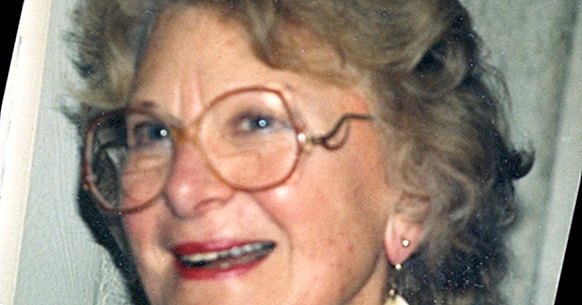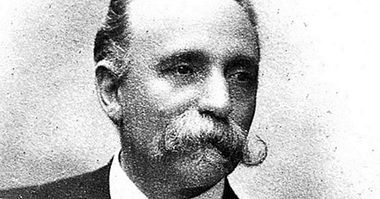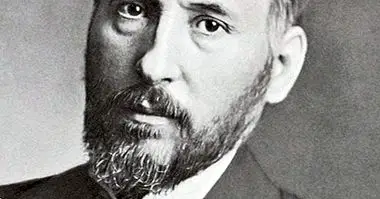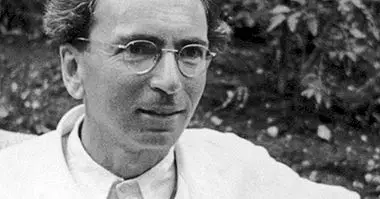Virginia Satir: biography of this pioneer of family therapy
Virginia Satir (1916-1988) is recognized as one of the pioneering psychologists in family therapy . His theory has had an important impact on systemic approach psychotherapy, and also on the humanistic tradition of clinical psychology.
We will see below a biography of Virginia Satir , as well as some of its main contributions to clinical intervention with a family focus.
- Related article: "History of Psychology: authors and main theories"
Brief biography of Virginia Satir
Virginia Satir was born on June 26, 1916 in the city of Neillsville in Wisconsin, United States. She is remembered as a self-taught woman, that even she learned to read and write with her own didactic resources since she was very small . She grew up in a catholic and at the same time scientific family, and was an older sister of five children.
In the year of 1929, when he was 13 years old, the family moved to the city of Milwaukee, so that Virginia could begin the school stage. The same year, the Great Depression began, and at a very early age Virginia began to work while continuing her studies. Once this is finished, He began his university education at the University of Wisconsin-Milwaukee , formerly known as Milwaukee State Teachers College.
Meanwhile, he worked at the Works Projects Administration (WPA), a program created to compensate for the consequences of the Great Depression in the United States, which mostly employed adult men in poverty. By the second half of the 1930s, the WPA was already employing women and young people in public projects. Likewise, Virginia worked for a time as a nanny. Eventually he specialized in education and, already as a professional, she worked as an educator.
In the summer of 1937, Virginia began courses at the University of the Northwest, in Chicago, an activity that she continued doing for a couple of more summers. Later, she studied in the department of administration of social services at the University of Chicago, where she completed her postgraduate studies in 1948. She finally trained as a social worker, a profession she practiced from 1951 until the beginning of her own therapeutic model.
- Maybe you're interested: "Virginia Satir family therapy: its objectives and uses"
Beginnings and influences of family therapy
After completing his studies, Virgina Satir began working in a private practice, and by the year 1955, he was already working at the Illinois Psychiatric Institute. Among its main claims, Satir defended the need to analyze not only the individual; but to carry out deep analyzes of family dynamics .
I thought that the studies of psychology at the individual level were essential, however, they could not stay there, because this did not offer the necessary explanations and not enough alternatives. For Satir, it was important to look at the first system that holds the individual, and this was the family.
Put another way, Virginia Satir argued that the "obvious problem" (the one verbalized in therapy or that which was easily observable) was almost never the real problem; it was only a "presentation". That is, it was a superficial conflict that had been generated by the very interaction of the individual and the family with the underlying problem.
From there, he proposed to carry out particular analyzes (that considered the case of each subject according to their family environment), and not general ones (that would explain the experience of a subject based on the coincidences he had with other subjects far from their context). All this introduced important developments in the area of clinical and educational psychology , that finally laid the foundations for a new model of intervention or family therapy.
As a result, in the late 1950s, Satir and other well-known American psychotherapists founded a research institute on mental functioning called the Mental Research Institute.
The seat was the city of Palo Alto, in California, and quickly consolidated as one of the most recognized institutions in psychological care at the family level. Among other things, it was from the interventions and research carried out at the Mental Research Institute, that the foundations of the systemic tradition in family psychotherapy were consolidated .
The humanist perspective of Satir
The psychotherapeutic intervention, for Virginia Satir, had the main objective of achieving personal growth, that is, of allowing the human to become a complete being. And for that, we had to look at the "microcosm" that the nuclear family represented.
In this, the maternal figure, the father figure, and the son or daughter, had to build a process of human validation as a whole ; that later was reflected in the approach of each person with the rest of society.
This translates into the constant establishment of interpersonal connections, because once the networks are consolidated among the members of a family, they are extrapolated to other members of society. So, "heal" family networks, could generate better people and better links on a large scale .
The model of personal growth
The theory of Virginia Satir was finally consolidated in a model of personal growth, which had important implications in psychotherapy. This model mainly pursued the following objectives:
- Increase self-esteem
- Enhance decision making.
- Take personal responsibilities .
- Achieve self-consistency.
Outstanding works
Some of the main works of Virginia Satir are Self esteem of 2001; In intimate contact, of 1976; Changing with family, of 1976; Y All your faces, 1978, among many others. Similarly He received several awards from different universities and psychotherapy associations worldwide.
Bibliographic references:
- Virginia Satir (2018). Famous psychologist. Retrieved September 14, 2018. Available at //www.famouspsychologists.org/virginia-satir/.



















